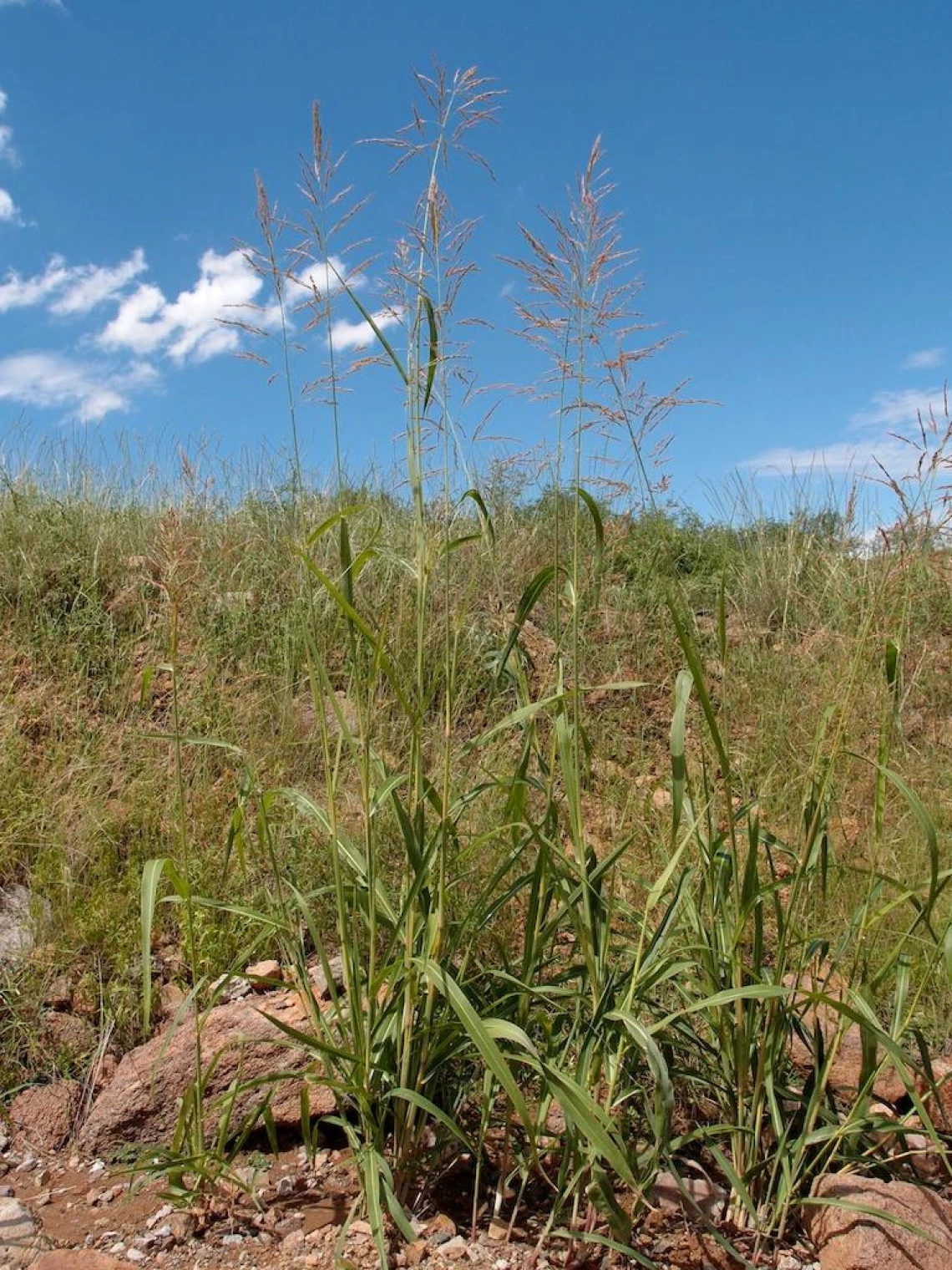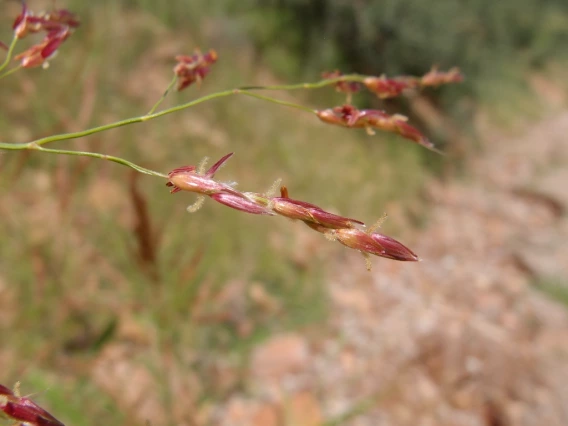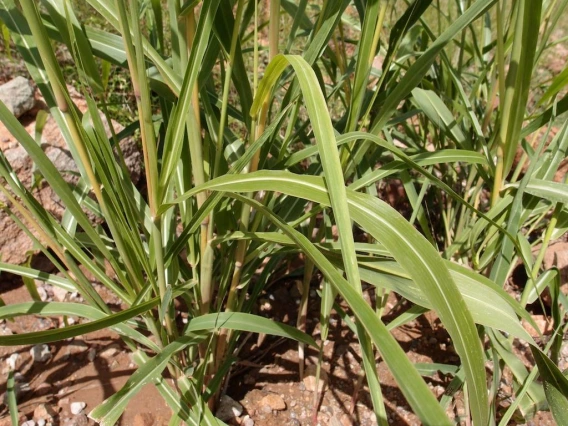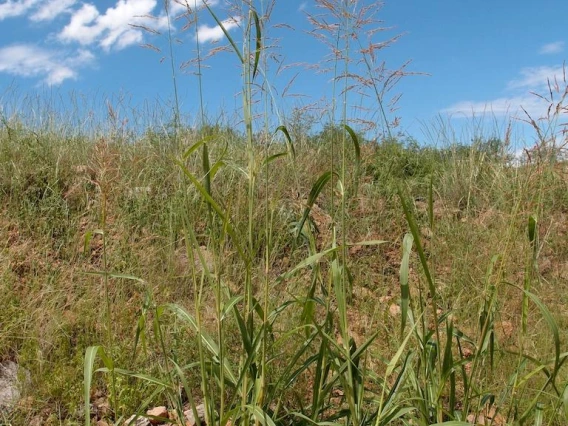Image

Sue Carnahan
Common Name(s)
Johnsongrass
Johnson grass
Scientific Name
Sorghum halepense
Family
Grass family (Poaceae)
Reasons for concern
Johnsongrass grows quickly to form dense colonies that easily outcompete native plants and crops. Wilted foliage can contain sufficient amounts of hydrogen cyanide to kill cattle and horses.
Classification
Included on the Arizona Noxious Weed List as a Class C noxious weed, which means it is widespread and “may be recommended for active control based on risk assessment.”
Botanical description
Tall, leafy grass with
Leaves
Smooth, flat blades 8 inches - 1 ½ feet long, up to ½ inch wide, light green with a notable white central vein
Stem(s)
3-7 feet, green, with nodes. can be underground
Inflorescence
Loose, spreading, purplish triangular panicle 6-12 inches long
Roots
Dense, tangled rhizomes up to 2 ½ feet deep
Native to
Mediterranean
Where it grows
Along irrigation ditches and in floodplains. roadsides, ditch banks, cultivated fields, and wastelands
Lifecycle
Perennial
Reproduction
Rhizomes and seed spread
Weedy Characteristics
A single plant may produce 80,000 or more seeds in 1 growing season and are dispersed by wind, water, or animals.
Control Strategies
Manual removal is only effective when the plants are young. Take care to remove the entirety of the plant, as rhizome fragments can grow into a new plant. Johnsongrass is resistant to glyphosate, so use clethodim or fluazifop as an alternate herbicide. Repeat treatments are usually necessary.
References





